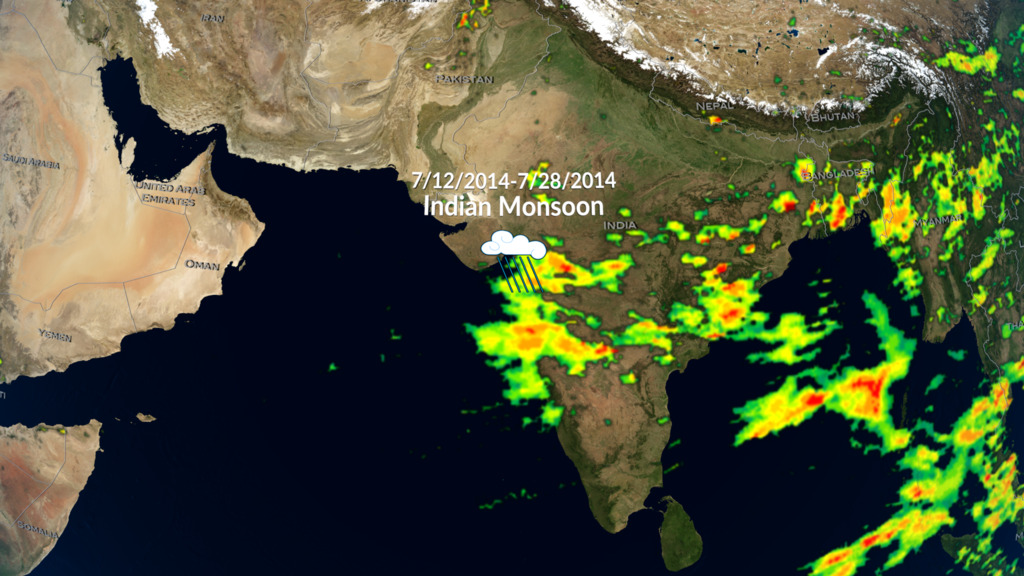Surface Flooding from Hurricane Harvey

Flooding around Houston, Tx after Hurricane Harvey
A new series of images generated with data from NASA's Soil Moisture Active Passive (SMAP) satellite illustrates the surface flooding caused by Hurricane Harvey from before its initial landfall through August 27, 2017. The SMAP observations detect the proportion of the ground covered by surface water within the satellite's field of view. The sequence of images depicts successive satellite orbital swath observations showing the surface water conditions on August 22, before Harvey's landfall (left), and then on August 27, two days after landfall (middle). The resulting increase in surface flooding from record rainfall over the three-day period, shown at right, depicts regionally heavy flooding around the Houston metropolitan area. The hardest hit areas (blue and purple shades) cover more than 23,000 square miles (about 59,600 square kilometers) and indicate a more than 1,000-fold increase in surface water cover from rainfall-driven flooding. SMAP's low-frequency (L-band) microwave radiometer features enhanced capabilities for detecting surface water changes in nearly all weather conditions and under low-to-moderate vegetation cover. The satellite provides global coverage with one- to three-day repeat sampling, which is well suited for monitoring dynamic inland waters around the world.

A wider view of Hurricane Harvey flooding
For More Information
Credits
Please give credit for this item to:
NASA/JPL-Caltech/GSFC/University of Montana
-
Technical support
- Marit Jentoft-Nilsen (Global Science and Technology, Inc.)
Missions
This page is related to the following missions:Datasets used
-
SMAP_FW (Fractional Water) [SMAP: Radiometer]
ID: 986Global fractional open water cover dynamics derived from SMAP, Version T
Credit: University of Montana
See all pages that use this dataset
Note: While we identify the data sets used on this page, we do not store any further details, nor the data sets themselves on our site.
Release date
This page was originally published on Friday, September 8, 2017.
This page was last updated on Friday, October 11, 2024 at 12:26 AM EDT.
